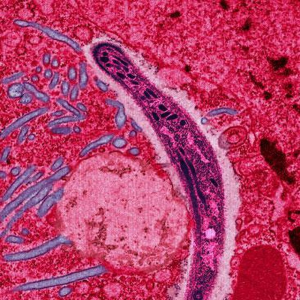Blood transfusion malaria among blood donors in the Central Blood Bank in Kassala State, Sudan

Accepted: 21 June 2022
HTML: 91
All claims expressed in this article are solely those of the authors and do not necessarily represent those of their affiliated organizations, or those of the publisher, the editors and the reviewers. Any product that may be evaluated in this article or claim that may be made by its manufacturer is not guaranteed or endorsed by the publisher.
Authors
Background and aims:
Although blood transfusion is generally believed to save human lives, blood can be a vehicle for the transmission of some infectious and parasitic diseases including malaria. So, this study aims to determine the prevalence of blood transfusion malaria among blood donors in the Central Blood Bank in Kassala State, according to age and blood groups.
Materials and methods:
A cross-sectional study was carried out in the central blood bank in Kassala State among blood donors; this study involved one hundred blood samples, collected from donors aged from 18 to 41 years.
Results:
The results showed that 1 (1%) of the donors was infected with the malaria parasite. The results also showed that the species of the malaria parasite was Plasmodium falciparum; the other Plasmodium species were not found. The results revealed that most donors were blood group O, while AB was the least common blood group; the blood group that harbored the malaria parasite was blood group O, and the other blood groups tested negative. The results also showed the highest number of blood donors was found in the age group of 24-29, and the positive donor was found in the same age group.
Conclusions:
Both the blood films and immune chromatography test showed one positive result for the donor and the percentage of blood transfusion malaria was 1%.
Supporting Agencies
NoneHow to Cite
PAGEPress has chosen to apply the Creative Commons Attribution NonCommercial 4.0 International License (CC BY-NC 4.0) to all manuscripts to be published.

 https://doi.org/10.4081/mm.2022.10283
https://doi.org/10.4081/mm.2022.10283



